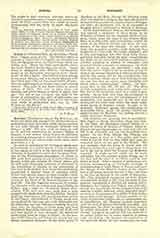

Acacia (in Hebrew shittah, plural shittim; Theod. puksos; Vulgate, spina, thorn). The Hebrew shittah is probably a contraction of Shinttah, and thus identical with the Egyptian shent; the Coptic shonte, thorn; the Arabic sunt. Hence the Greek name akantha, thorn, the Latin, acanthus for the Egyptian acacia. Acacia wood is designated ksulon asepton, “incorruptible wood” in the Septuagint, and lignum setim, “setim-wood” in the Vulgate. The Biblical Acacia belongs to the genus Mimosa, and is no doubt identical with the Acacia seyal (Del.) or the Acacia tortilis (Hayne); both are called seyyal, or torrent trees, sayl meaning torrent. They grow in the desert wadis, or torrent valleys, of Sinai. The wood is light, hard, and durable, and grows almost as black as ebony with age. The ark of the covenant, the table of the loaves of proposition, the altar of holocausts, the altar of incense, the wooden parts of the tabernacle, were made of setim-wood (Ex. xxv, 5). (See Plants in the Bible.)
A.J. MAAS

